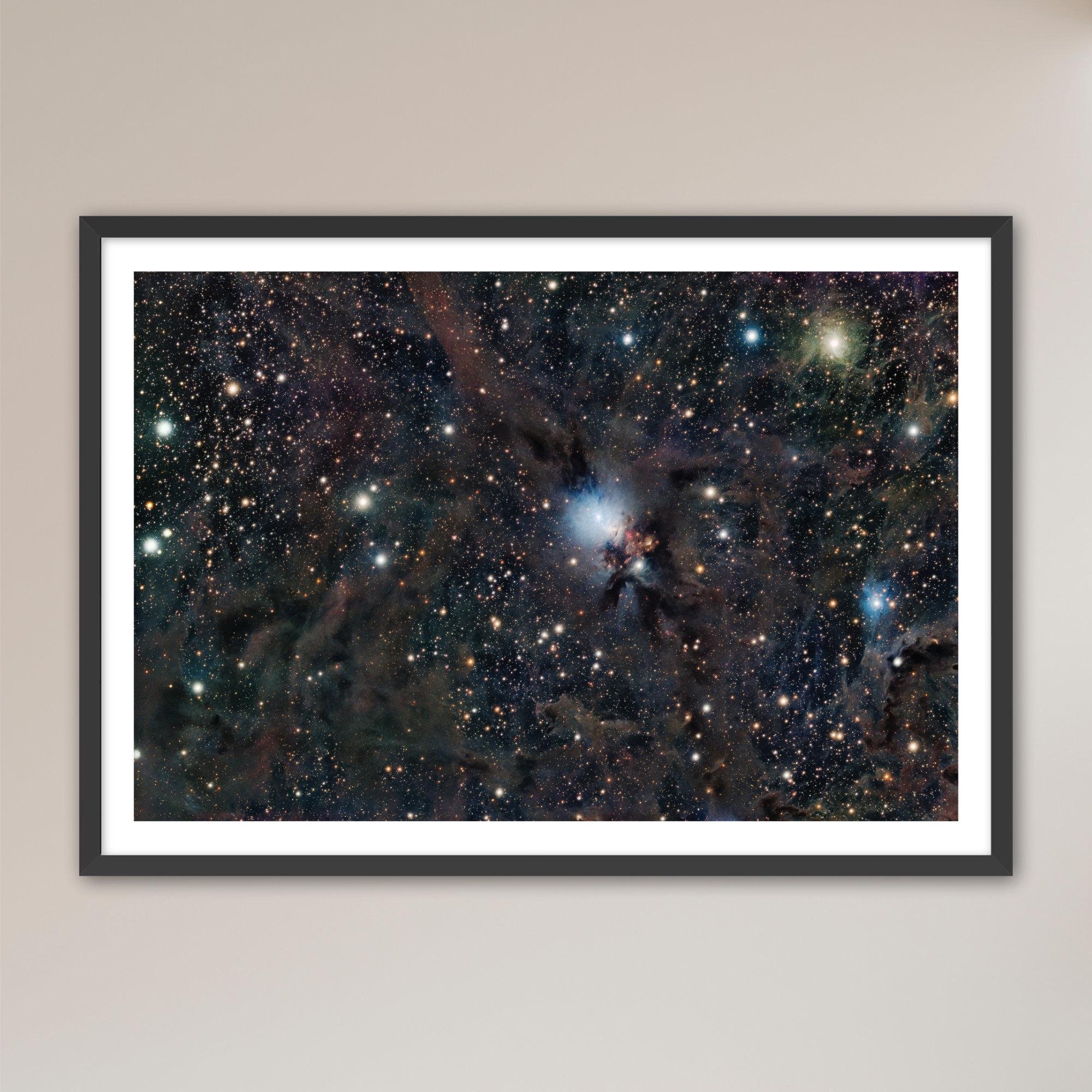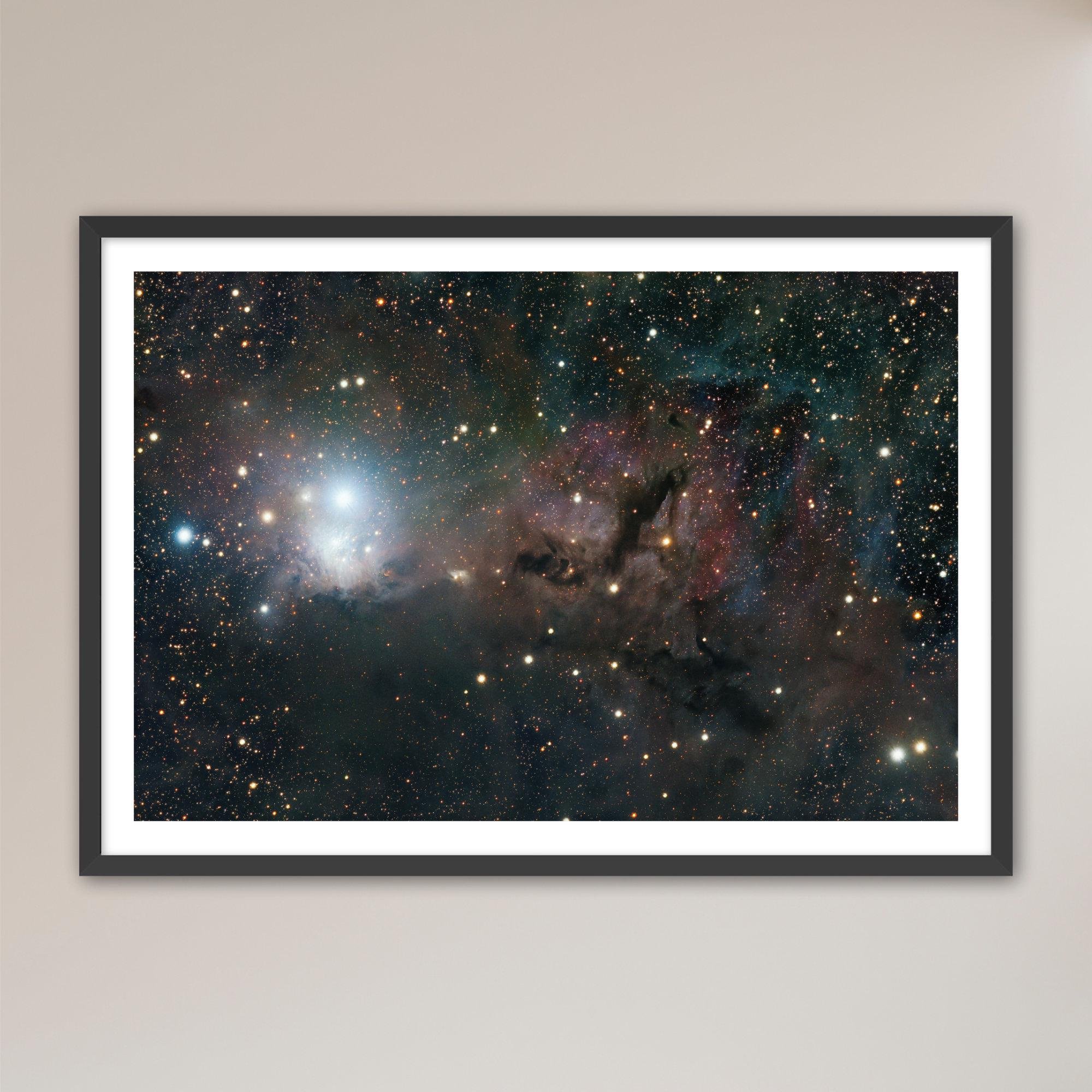A Detailed Look into the Perseus Molecular Cloud: Tracing the Origins of Stellar Formation
The Perseus Molecular Cloud in constellation… you guessed it… Perseus. | Featuring bright reflection nebulae IC 348 (left) and NGC 1333 (right).
About the Image…
This is by far my longest integration project, with the most clear nights I've ever had in a single month in a long time. It is pretty cloudy in VA, so I usually get distracted and move on to another shiny target after hour 10-15 or so, but this time I decided to keep on it and go DEEP. I think it paid off! Finally I am proud to have an image that reveals the filamentary structure of dark nebulae.
The Perseus Molecular Cloud is a vast and dynamic region of star formation in the northern sky, offering astronomers an unparalleled view of the processes that give birth to stars. Spanning about 500 light-years in diameter and situated roughly 1,000 light-years from Earth, this region is a huge treasure trove of astrophysical phenomena. It is approximately 6 by 2 degrees in size in the sky. My image features two subjects of interest in the larger cloud: NGC 1333 and IC 348
NGC 1333 (right), discovered in 1855 by German astronomer Eduard Schönfeld, is a prominent reflection nebula. Its brilliance comes from starlight reflecting off dense clouds of interstellar dust. Stretching across approximately 4 light-years, NGC 1333 is a chaotic stellar nursery, where young stars and their energetic outflows carve complex patterns in the surrounding material.
IC 348 (left), identified by Edward Emerson Barnard in 1890, is a slightly older stellar cluster encased in nebulosity. While still a hub of star formation, IC 348 is home to both newly formed stars and more established ones, surrounded by residual dust that creates a soft luminescence. Like NGC 1333, IC 348 is around 1,000 light-years away, and its dimensions are similarly expansive.
To put the size of this cloud into perspective, these objects cover an area of the sky far larger than several full-moons when observed through a telescope. Their massive scale underscores the sheer magnitude of the forces shaping the cosmos. Even so, these structures are far too small and dim to be seen with the naked eye.
Equipment & Technical Stats
Captured with my refractor / deep-sky rig:
SVBONY SV550 80mm F/6 APO
QHY268M
QHY CFW3M
Optolong 36mm LRGB
iOptron CEM26
More details on my about page!
Capture Statistics:
Color Palette: LRGB / True-Color
Framing: Mosaic (two panels)
Exposure: 67 total hours (33.5 per panel)
Luminance - 8.37
Red - 8.37
Green - 8.37
Blue - 8.37
Light Pollution: Bortle 4
Processing Details:
Siril: Calibration, stacking
Graxpert: AI background extraction
Siril: GHS stretch
DXO PhotoLab 8: Adjust contrast, exposure, clarity
Graxpert: AI denoise
Cosmic Clarity: AI deconvolution
Microsoft ICE: Merge mosaic panels
Affinity Photo 2: Micro adjust curves, export JPG




